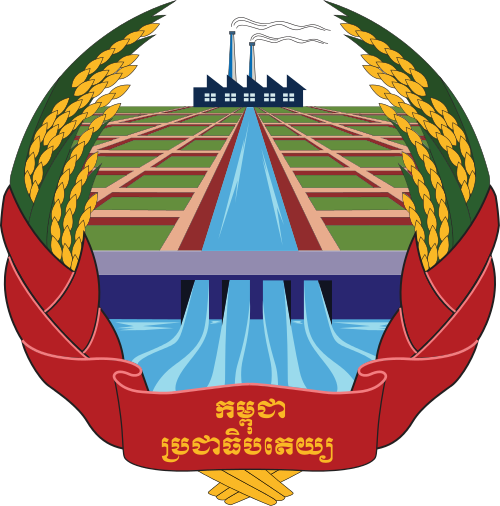The internal security apparatus of Democratic Kampuchea (1975–1979), under the Khmer Rouge regime, was characterized by extreme measures designed to maintain control over the populace and suppress any dissent.
The regime’s approach to internal security was rooted in its ideology of paranoia, class struggle, and the need for absolute loyalty to the state and its leaders. This article explores the structure, functions, and implications of internal security in Democratic Kampuchea.
Ideological Underpinnings of Internal Security
The Khmer Rouge’s ideology emphasized the need for a “pure” society, free from perceived enemies and threats. This worldview fostered a culture of suspicion, where anyone could be labeled an enemy of the revolution. The CPK (Communist Party of Kampuchea) viewed internal security as essential to achieving its revolutionary goals. The principles underlying this internal security approach can be summarized as follows:
1. Class Struggle
The regime’s ideology was heavily influenced by the notion of class struggle. The Khmer Rouge sought to eradicate the “bourgeois” elements of society, which they believed included intellectuals, professionals, and anyone associated with the previous government. The internal security apparatus was tasked with identifying and eliminating these perceived threats to the revolution.
2. Paranoia and Control
The leadership of Democratic Kampuchea operated under a pervasive sense of paranoia, fearing both external and internal threats. This led to the implementation of brutal measures to control the population. The Khmer Rouge believed that maintaining strict surveillance and enforcing loyalty was crucial for the survival of the regime.
3. Totalitarianism
The regime’s totalitarian nature manifested itself in the extreme measures taken to control every aspect of life in Cambodia. The internal security apparatus was a key component of this totalitarian state, designed to suppress dissent, control information, and ensure absolute loyalty to the leadership.
Structure of the Internal Security Apparatus
The internal security system in Democratic Kampuchea was complex and multifaceted, involving various organizations and institutions that worked together to maintain control over the population.
1. Ministry of Interior
The Ministry of Interior was the primary institution responsible for internal security. It oversaw various agencies tasked with law enforcement, intelligence gathering, and maintaining order within the country. The ministry played a crucial role in implementing the regime’s policies and ensuring that the Khmer Rouge’s ideological goals were met.
2. Sangkum Reastr Niyum (SRN)
The Sangkum Reastr Niyum, or Revolutionary Youth, served as a youth organization that functioned as both a political and military force. Members of this organization were often recruited from rural areas and indoctrinated with the Khmer Rouge’s ideology. They were tasked with monitoring the behavior of their peers and reporting any suspicious activities or dissent.
3. Security Police and Military Units
Various security police and military units operated under the Ministry of Interior. These forces were responsible for conducting arrests, interrogations, and executions of suspected counter-revolutionaries. They played a critical role in enforcing the regime’s policies and instilling fear in the population.
4. Khmer Rouge Militia
The Khmer Rouge Militia was a decentralized force comprised of local village militia groups. These militias were responsible for maintaining order within their communities and reported directly to the central leadership. They played a vital role in monitoring the behavior of villagers and ensuring compliance with the regime’s policies.
Functions of Internal Security
The internal security apparatus in Democratic Kampuchea was responsible for a wide range of functions aimed at maintaining control over the population and suppressing dissent.
1. Surveillance and Monitoring
A key function of the internal security system was the surveillance of the population. The Khmer Rouge encouraged citizens to inform on one another, fostering a culture of distrust. Neighbors, friends, and family members were often turned against each other, creating an atmosphere where anyone could be accused of disloyalty.
2. Arrests and Interrogations
The regime utilized a systematic approach to arresting suspected enemies of the state. People were often taken from their homes in the dead of night, with little explanation or due process. Interrogations were brutal and designed to extract confessions or information about potential conspiracies. The infamous S-21 prison, also known as Tuol Sleng, became a symbol of the regime’s brutality, where thousands were tortured and executed.
3. Executions and Purges
The internal security apparatus was responsible for carrying out mass executions and purges. Individuals identified as enemies of the revolution—whether real or imagined—were often executed without trial. The Khmer Rouge’s paranoia led to widespread purges, resulting in the deaths of thousands of people, including party members, military personnel, and ordinary citizens.
4. Ideological Indoctrination
Another critical function of the internal security system was the enforcement of ideological conformity. The regime conducted regular political education sessions to indoctrinate the population with its revolutionary ideals. Those who failed to demonstrate sufficient loyalty to the regime were often subjected to persecution.
Implications for Cambodian Society
The internal security apparatus of Democratic Kampuchea had profound implications for Cambodian society, affecting every aspect of life during the Khmer Rouge regime.
1. Culture of Fear and Paranoia
The pervasive surveillance and brutal enforcement of loyalty created a culture of fear throughout the country. Citizens lived in constant dread of being accused of disloyalty or subversion. This atmosphere stifled creativity, expression, and dissent, effectively silencing opposition to the regime.
2. Destruction of Social Fabric
The Khmer Rouge’s policies shattered the social fabric of Cambodian society. Families were torn apart, and communities were dismantled as people were forcibly relocated to the countryside. The regime’s brutal tactics eroded trust among individuals, as neighbors turned against each other in fear of being reported.
3. Legacy of Trauma and Violence
The internal security apparatus left a lasting legacy of trauma and violence in Cambodia. The memories of the brutalities inflicted during this period continue to haunt survivors and their descendants. The psychological scars of fear, loss, and betrayal have persisted long after the regime’s fall.
4. Challenges for Post-Khmer Rouge Cambodia
The legacy of the internal security apparatus posed significant challenges for Cambodia after the fall of the Khmer Rouge regime in 1979. The new government faced the daunting task of reconciling a deeply traumatized society and rebuilding trust among its citizens. The remnants of the Khmer Rouge’s ideology and tactics still lingered, complicating efforts to foster a peaceful and democratic society.
Conclusion
The internal security apparatus of Democratic Kampuchea was a critical component of the Khmer Rouge regime’s strategy to maintain control and suppress dissent. Rooted in an ideology of paranoia, class struggle, and totalitarianism, this system functioned through surveillance, brutality, and repression. The implications for Cambodian society were profound, creating a culture of fear and distrust that would have lasting effects on the nation.
As Cambodia continues to grapple with the legacy of the Khmer Rouge, understanding the internal security mechanisms that shaped this dark chapter in its history is essential. By examining these elements, we can gain insight into the consequences of unchecked power and the importance of safeguarding human rights and civil liberties in any society.









